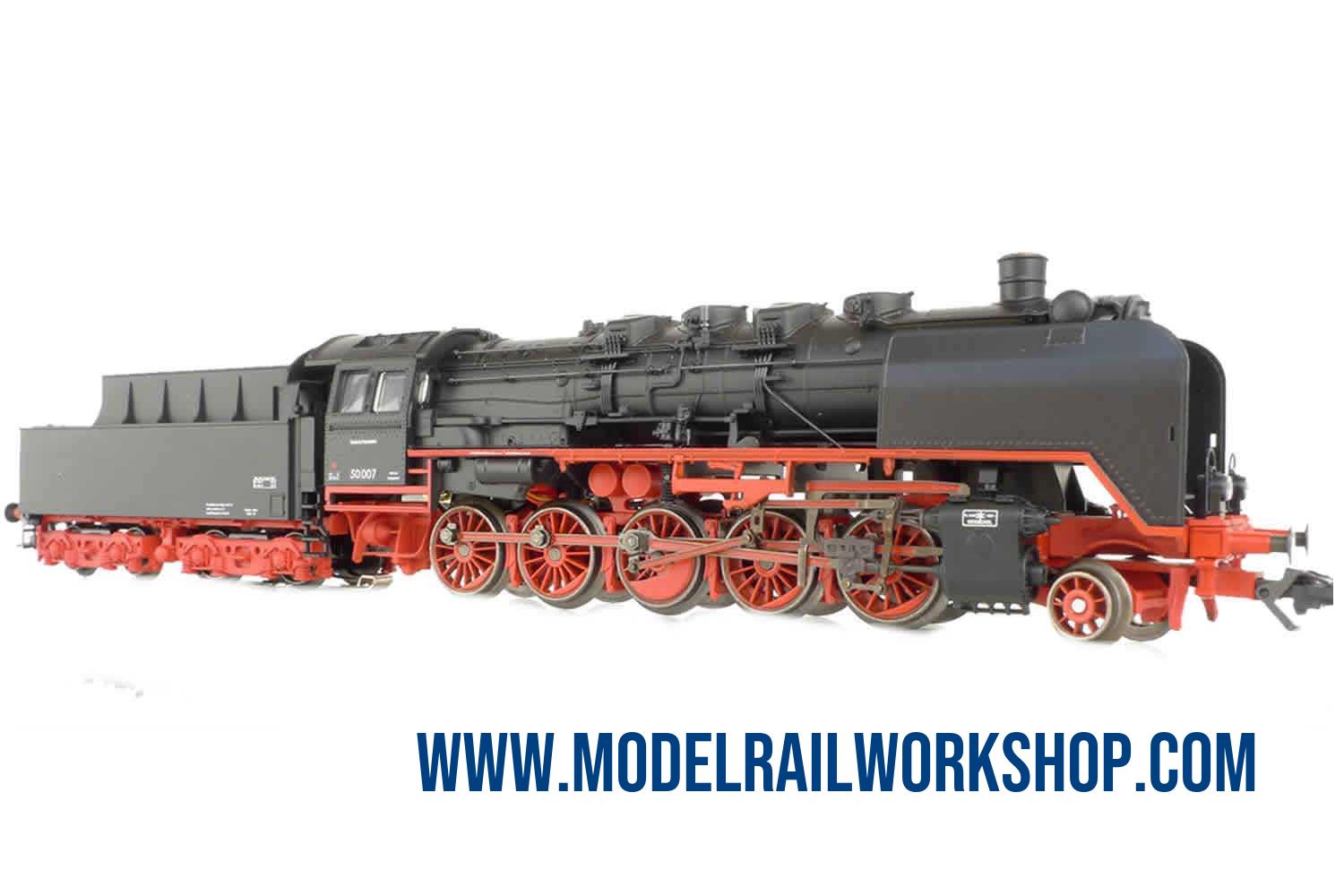MODEL RAIL WORKSHOP - H0 MÄRKLIN REGISTER
Feel free to use.....
MÄRKLIN PRODUCT: 37849 Steam locomotive with tender - BR50

| KEY DATA | |
|---|---|
| Product Name | 37849 Steam locomotive with tender - BR50 |
| Object type | Locomotive-Steam with tender |
| Product Line | Märklin Special Model |
| Era | 1925-1945 (II) |
| Manufactured years | 2007-2009 |
| Text on object | Deutsceh Reichsbahn |
| Number on object | 50 007 |
| Classification | BR50 |
| Type of housing | Metal/Synthetic |
| Length | 26.3 cm |
| Technology | Digital MFX |
| Railway company | DE-DRG Deutsche Reichsbahn-Gesellschaft (1920/24-1937) |
| Märklin RRP (Year) | 379€ (2008) |
| Koll valuation (Year) | 215€ (2022) |
| Url to Märklin | Klick to GoTo www.maerklin.de |
| Description | |
|---|---|